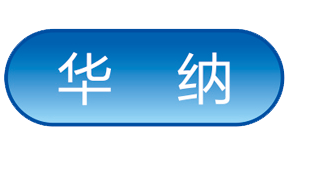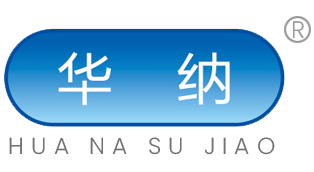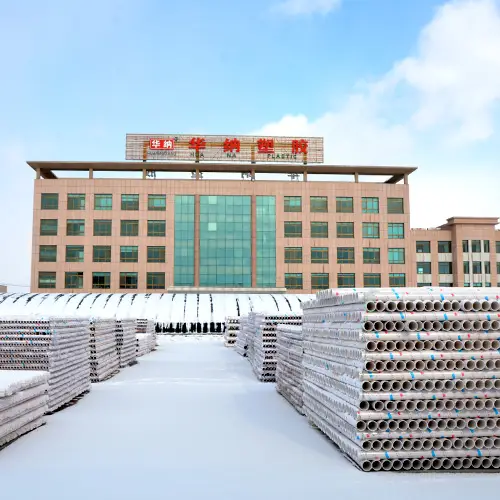Is pvc material good?Is pvc material harmful to human body?
Release time:
2025-01-08
Source:
In today's society, with the continuous progress of science and technology and the rapid development of industry, a variety of materials are widely used in all areas of life.
In today's society, with the continuous progress of science and technology and the rapid development of industry, various materials are widely used in various fields of life. Among them, polyvinyl chloride (PVC), as a commonly used plastic material, has attracted much attention due to its unique properties and wide range of applications. In this paper, we will comprehensively analyze PVC materials from the aspects of definition, properties, applications, advantages and disadvantages, and environmental impacts of PVC.
What is PVC?
Polyvinyl chloride, or PVC for short, is a plastic material produced from vinyl chloride monomer through a polymerization reaction, and is the third most common of all plastic types, after polyethylene (PE) and polypropylene (PP). It is an inorganic material in the form of a white powder, and different PVC materials can be made by adding different additives to meet a variety of different applications.
Properties of PVC
PVC has the following significant features:
1, chemical resistance: PVC has excellent resistance to acid, alkali, salt and a variety of chemical substances.
2, weathering properties: PVC has good stability to light and heat, and can be used for a long time in the natural environment without aging.
3, electrical insulation: PVC is an excellent electrical insulation material, suitable for the manufacture of various wires and cables.
4、Mechanical properties: PVC has good resistance to pressure, stretching, impact resistance.
5, processing performance: easy to cut, welding, bonding, can be processed into various shapes and sizes of products.
The application of PVC materials
Due to the unique properties of PVC, it is widely used in the following areas:
1, building materials: PVC is not only used for the production of various types of pipes, doors, windows, wall panels, etc., but also used for flooring, roofing materials.
2、Packaging materials: PVC is used to make food packaging, pharmaceutical packaging, cosmetic packaging and so on.
3、Electrical appliances: the insulation layer of wires and cables, the shell of various electrical appliances, etc..
4、Household goods: furniture, decorations, toys and so on.
5、Automotive industry: car interior decoration materials, body film, etc.
The advantages of PVC materials
1, cost-effective: PVC production costs are relatively low, and easy to mass production.
2, a variety of applications: by adding different additives, PVC can have different properties to meet a variety of applications.
3, recyclability: PVC is a recyclable material, conducive to the recycling of resources.
Disadvantages of PVC materials
1, environmental issues: PVC in the production and disposal process may release harmful substances, the environment and human health.
2, poor heat resistance: PVC's heat resistance is relatively poor, easy to soften and deform at high temperatures.
PVC material is harmful to human body?
1, the harm of PVC itself
Pure PVC is a relatively stable substance, it itself is relatively small direct harm to human health. Problems mainly occur in the production, use and disposal of PVC, as well as certain chemicals added to PVC.
2, plasticizers (phthalates)
- Health effects: Some PVC products (e.g., soft plastic toys, medical devices, etc.) require the addition of plasticizers to make them soft. Phthalates are one of the most commonly used plasticizers, and studies have shown that long-term or high-dose exposure to certain types of phthalates may have negative effects on human health, including endocrine disruption, reproductive problems, and other health issues.
3. Stabilizers
- Heavy metal stabilizers: In order to improve the thermal stability of PVC, heavy metals such as lead and cadmium may be added as stabilizers, which are harmful to human health. However, due to health and environmental concerns, lead-free or low-toxicity stabilizers are increasingly being used.
4. Production and Disposal
- Vinyl chloride: The PVC manufacturing process uses vinyl chloride monomer (VCM), which is a known carcinogen. Although present in extremely low levels in the finished product, spills during the manufacturing process can pose a hazard to workers and the surrounding environment.
- Incineration and landfill: Improper disposal of PVC waste, such as incineration and landfill, can release hazardous substances, including dioxin, which is a highly toxic substance.
Environmental impact of PVC materials
The environmental impact of PVC is mainly reflected in the various stages of its life cycle:
1. Production stage: The production process of PVC consumes a large amount of energy and may produce hazardous substances such as chlorine and dioxins.
2、Use Stage: During use, if not handled properly, PVC products may release hazardous substances due to exposure to high temperatures or sources of ignition.
3. Disposal stage: PVC products, if not properly recycled, will persist in the natural environment and pollute soil and water bodies.
PVC material has become an important plastic material with its unique properties and wide range of applications. However, its environmental impact cannot be ignored. As people's environmental awareness grows and technology advances, the development of more environmentally friendly and sustainable alternatives to PVC, as well as the enhancement of PVC recycling, will be an important direction for future development.
Preceding Page
Related News
What is the difference between PE pipe and PVC pipe? PE is polyethylene plastic, the most common type of plastic.
How many years does pvc pipe last
What is the difference between PE pipe and PVC pipe? PE is polyethylene plastic, the most common type of plastic.
PE VS PVC? The best of the best!
What is the difference between PE pipe and PVC pipe? PE is polyethylene plastic, the most common type of plastic.
PTFE Bellows Properties and Applications
PTFE bellows is specifically characterized by excellent resistance to high and low temperatures, chemical stability, electrical insulation, outstanding non-stick and high mechanical strength.
Conductive UPE chemical rubber hose
Conductive UPE chemical rubber hose by a variety of materials multi-layer sealing structure.
How much do you know about braided pipe classification
Braided tube according to the use of the purpose in can be divided into single head tube, braided tube, shower hose (shower hose).








